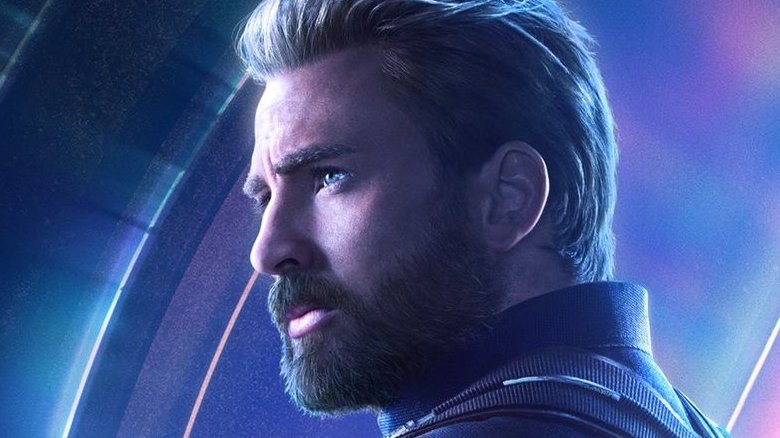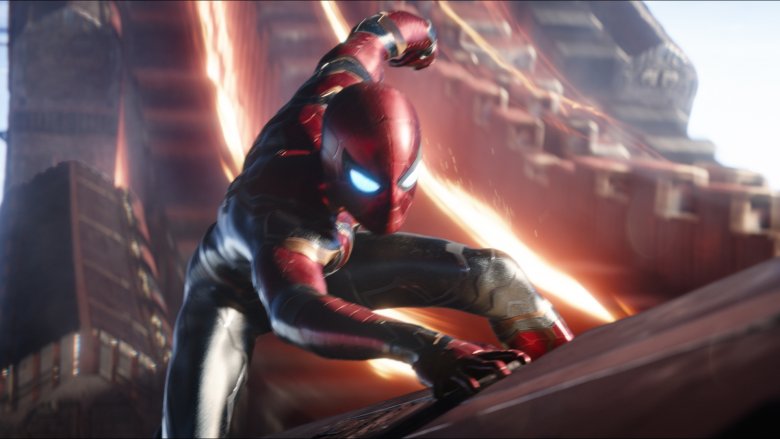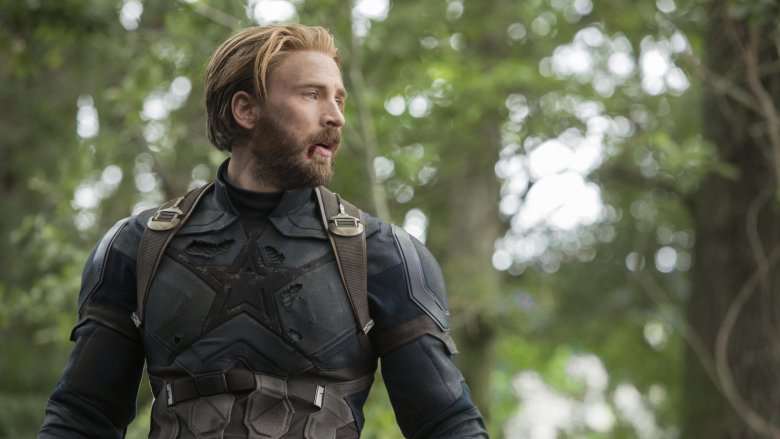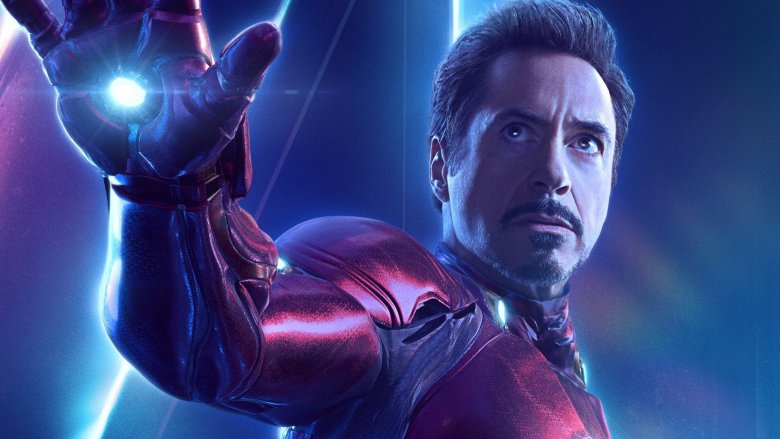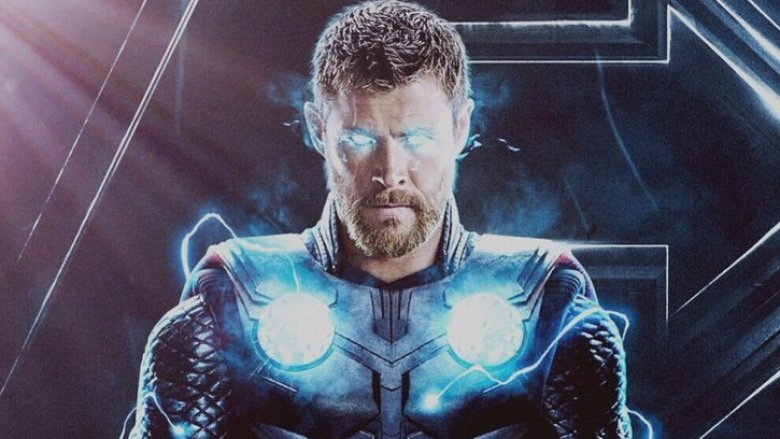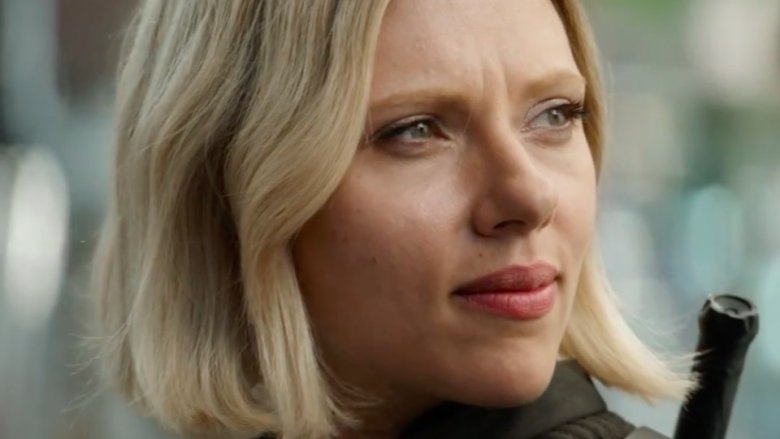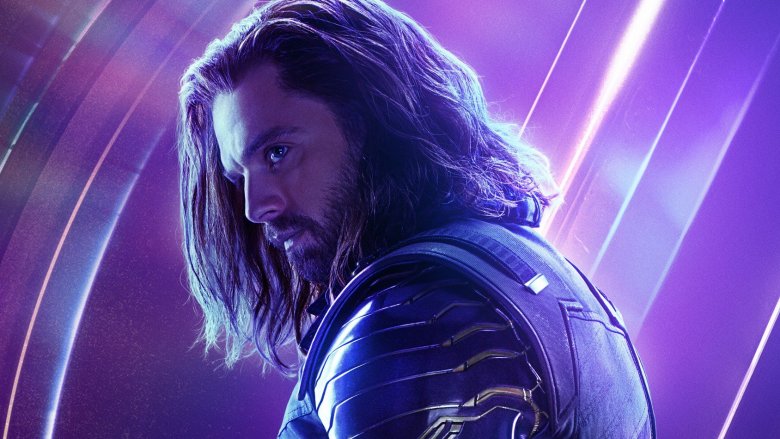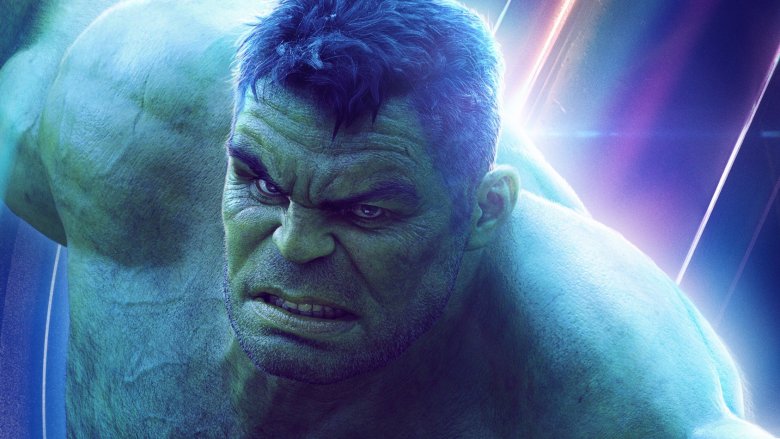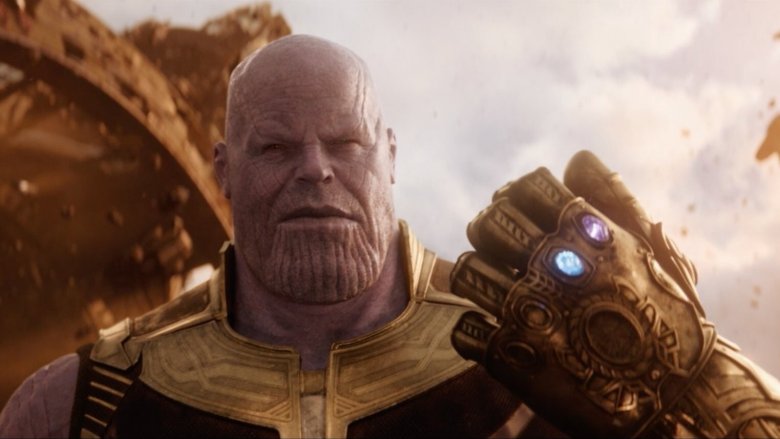Hidden Meanings Behind Avengers: Infinity War Costumes
Considering the movie's record-setting opening at the top of the domestic box office, the chances are pretty good that you've seen Avengers: Infinity War. Even if you haven't, the marketing blitz for the 19th movie in the Marvel Cinematic Universe was inescapable enough that you've almost certainly gotten a glimpse of the Avengers' latest looks.
While the broad strokes of the costuming remain consistent, all the characters in the MCU receive little tweaks to their costuming as they hop from movie to movie. (Let's face it, you've gotta give consumers some kind of a reason to keep buying new toys.)
Not every character in the whole 40-strong cast of superheroes in Avengers: Infinity War goes through a wardrobe change before they make their entrance. But many of Earth's mightiest heroes (and their intergalactic friends) do show up with different duds when it comes time to do battle, and their choices in costuming represent more than you might think.
Make sure you've seen the movie before diving into this one, because we are going to thoroughly spoil the entire movie as we break down the hidden meanings behind the costumes in Avengers: Infinity War.
Iron Spider/Spider-Man
A whole lot happens to Peter Parker in Avengers: Infinity War. He goes to outer space, he sees a lot of his friends get hurt, and he, uh, vanishes from existence on a distant moon while pleading for his life. But before any of that happens, he gets a kick-ass suit of armor.
Joining the fight against Cull Obsidian and the Ebony Maw in his regular suit, Spider-Man ends up at risk of suffocating in the vacuum of space when their spaceship starts shooting to the atmosphere. Luckily, Iron Man is hot on the vessel's heels, and calls in the remote delivery of the Iron Spider suit he presented to Peter at the end of Spider-Man: Homecoming — the one Peter rejected in favor of a more homegrown approach.
The life-or-death circumstances are the perfect excuse for getting the friendly neighborhood wall-crawler in the high-tech suit, letting Spider-Man stay true to his own personal code by having Tony make the decision for him. Also, Stark doesn't intend for Spidey to use the suit to fight, building in another version of his "training wheels" protocol that promptly activates a parachute to pull Peter back to Earth.
The most fun aspect of the Stark-designed suit is its mechanical spider-arms — called "waldoes" — that it produces from the back, capable of grasping onto objects and looking around corners with onboard cameras. While the comic version of the suit had three arms, Infinity War's version features four, giving its wearer a spider-accurate total of eight legs.
Captain America
Can we just call him Cap now? In light of the events of Civil War, it doesn't feel right to think of Captain Steve Rogers as having the same stars-and-stripes persona he started out with so many decades ago, back when he was doing battle with the Red Skull during World War II.
Since the events of Civil War, Cap has been bereft of his iconic shield, trotting the globe with his Secret Avengers in defiance of the Sokovia Accords. He re-emerges in Infinity War in Scotland, springing from the shadows with Falcon and Black Widow to defend Vision from Thanos' minions. At first, he's essentially unarmed, relying on little more than his enhanced athleticism — and a beard that slays — to put up a fight. When he arrives in the house of T'Challa later in the movie, he's gifted two identical, jagged Wakandan shields, both made of the same sort of indestructible vibranium as his classic round shield.
In contrast to the bright suit he wore in The Avengers, his costume in Infinity War is all blacks and dark blues. In a nod to his recent history on the run and his frayed connection to America, the fabric is cut up around the lone star on his chest. He also has an almost-ludicrous abundance of tactical belts and straps all over his suit — even more than the paratrooper-inspired outfit he wore in The First Avenger.
Iron Man
Tony Stark, an insane and obsessive megalomaniac, is always the most reliable figure when it comes to showing up to the movies in a brand new outfit. Still, he's never worn a suit so radically advanced as the one he dons in Infinity War.
By the time the credits rolled on Iron Man 3, audiences had been introduced to nearly 50 distinct Iron Man suits Tony owns, most of them capable of working autonomously and in tandem. If you thought a fleet of full-sized robots gave him too much of a tactical advantage, you haven't seen anything yet.
Infinity War introduces us to a new suit made entirely of nanobots — microscopic robots that he stores inside an Arc Reactor-looking container in his old Arc Reactor chest slot. (As he makes clear to Pepper, though, the removable enclosure doesn't have the poisonous qualities of his old Arc Reactor tech.) At the push of a button, the new suit can be formed over Tony as the living metal swarms over him like ants. It can also change rapidly, forming swords, shields, and even a jet booster. He also sprays nanobots to effectively seal a breach in a spaceship.
Tony's nanotech suit is a stripped-down version of an even more insane suit from the comics that was known as the Bleeding Edge. Instead of being enclosed in a container, the nanobots were embedded beneath Tony's skin, able to form any material around him — including regular street clothes.
Thor
After spending his time on Sakaar in Thor: Ragnarok going sun's out guns out, the god of thunder spends his seventh outing in the MCU rocking a costume very similar to the one he wore in his first appearance — with a few twists.
A large part of Thor's story in Infinity War is given over to getting back to full power. After first encountering Thanos and his minions during their slaughter of the surviving Asgardians, Thor travels with Rocket, Groot, and Groot's teenage gaming habit in search of a new weapon to replace the hammer Mjolnir that Hela very recently destroyed.
During the ride over to Nidavellir to get a new hammer, he's gifted a new cybernetic eye by Rocket — a mismatched brown to his usual blue. It's a fitting gift, considering Rocket's well-established history of stealing prosthetic body parts from unsuspecting people. (It's a testament to these movies' charm that Rocket's completely psychopathic move of stealing from the disabled comes off as super-endearing here.) Also fun: He just had the eye in his pocket. He didn't even need to go dig it up from another room.
The new hammer that the giant dwarf Eitri creates for Thor, Stormbreaker, is completed with a handle made from the generous (and worthy!) Groot. By the time Thor, Rocket, and Groot come soaring into Wakanda during the final battle, Thor has his original look back — minus the blond locks. Like he mentions in the movie, he's lost a lot over the years.
Black Widow
While everyone seems to comment on Thor's lack of hair during the Avengers' battlefield reunion, no one so much as mentions Natasha's new hairdo — not even a behind-the-back comment about how the blonde eyebrows make her look like a completely different person.
Of course, changing up her look is par for the course for a spy like Black Widow, to infiltrate (a la Iron Man 2) or go undetected, as she's doing as a member of Cap's Secret Avengers. As Thunderbolt Ross makes clear in his call to Rhodey, she and her teammates are fugitives. They're also fighters, with her new costume being a more tactical and combat-ready variation on the sort of thing she's worn before.
Black Widow's costume in Infinity War is based on the same thing she was wearing the last time we saw her in Captain America: Civil War. For this go-around, she's switched out her smaller police-style batons for a pair with much more heft to them, and also added a green jacket with lots of straps and zippers. The look of it suggests a bulletproof vest, and though the material seems much too fitted to actually be one, it does remind you at a glance that her whole life is now a combat zone. It's a far cry from the cheesecake, sleek, and skintight jumpsuit she sported during her first appearance in Iron Man 2.
Bucky Barnes/Winter Soldier/White Wolf
James "Bucky" Barnes is a man of many identities, all of them — let's face it — sort of second-rate. (It's going to be so great if we ever get to call this dude Captain America in the movies.)
After getting his super-strong Winter Soldier arm lopped off by Iron Man during their Civil War showdown, Bucky is finally gifted a new, silver and golden arm from the Wakandans in Avengers: Infinity War. He also has been granted something of a new moniker: White Wolf.
In both the Black Panther coda and the third Avengers movie, the Wakandan characters refer to Bucky with the White Wolf name. Curiously, it's not a name that Bucky has typically been associated with. In the comics, the White Wolf was the adopted brother of T'Challa and Shuri, and he wore a full-body suit similar to Black Panther that looks nothing like what Bucky wears here.
While we're reintroduced to Bucky in loose-fitting Wakandan clothes, casually kicking it in his new favorite country with brightly-colored scarves and wraps, he goes back to his bland self when it comes time to actually do battle. While he's no longer the black-clad menace of Captain America: The Winter Soldier, he still goes into battle in vaguely combat-ready dark tones, with a blue top, brown pants, and significantly fewer straps and belt buckles than Cap and Black Widow.
Bruce Banner
Even though Infinity War is a relentlessly moving movie that barely even stops to introduce its characters, Bruce Banner still takes the time to put on some more respectable clothes.
In Thor: Ragnarok, Banner spent his time running around wearing Tony Stark's clothes, rocking a shirt that features Patrick Nagel's art for Duran Duran's Rio. Even though it made him look like the coolest dude on Sakaar, it clearly didn't make him very comfortable.
After crash landing back on Earth through the roof of Doctor Strange's Sanctum Sanctorum, Banner hooks himself up with a nice plaid button-down and sport coat combo which he proceeds to keep intact for the rest of the movie, never fully transforming into the Hulk again following the humiliating (and Freudian!) beatdown from Thanos.
However, just because he's back in the costume of a boring man doesn't mean that Banner is exactly done borrowing Tony Stark's clothes. When the battle in Wakanda against Thanos' outriders comes around, Banner is determined to stay in the fight, using Stark's oversized Hulkbuster armor to emulate his usual smashing skill set.
Thanos
Aside from the increasingly bejeweled hardware on his hand, Thanos goes through a meaningful costuming progression during his quest in Infinity War.
Up until now, every glimpse audiences have gotten of Thanos has seen him wearing a full suit of golden armor, helmet included. But when the Mad Titan shows up in Infinity War (played by Josh Brolin in a motion-captured performance), he's wearing considerably less.
Thanos starts the movie wearing his golden helmet, with only the purple Power Stone in his Gauntlet. After he obtains the blue Space Stone from Loki, Thanos removes the helmet, and by the time the movie is in full swing, he's bared his arms as well. The flashback to his attack on Gamora's homeworld of Zen-Whoberi shows him wearing his full armor, so why does he ditch it all for his final push for the stones?
According to the movie's co-director Joe Russo, the sleeveless and capless look was meant to demonstrate Thanos' state of mind, as well as the growth of his power.
"[Thanos] has a more casual approach in this film, and it's very philosophical for him," Russo said. "It's part of his character definition. It's a spiritual journey for him to collect the Stones and one with which he doesn't need armor. Once he starts acquiring the Stones, he doesn't need armor in the same way he did when he was a warlord. It's a very symbolic costume."
